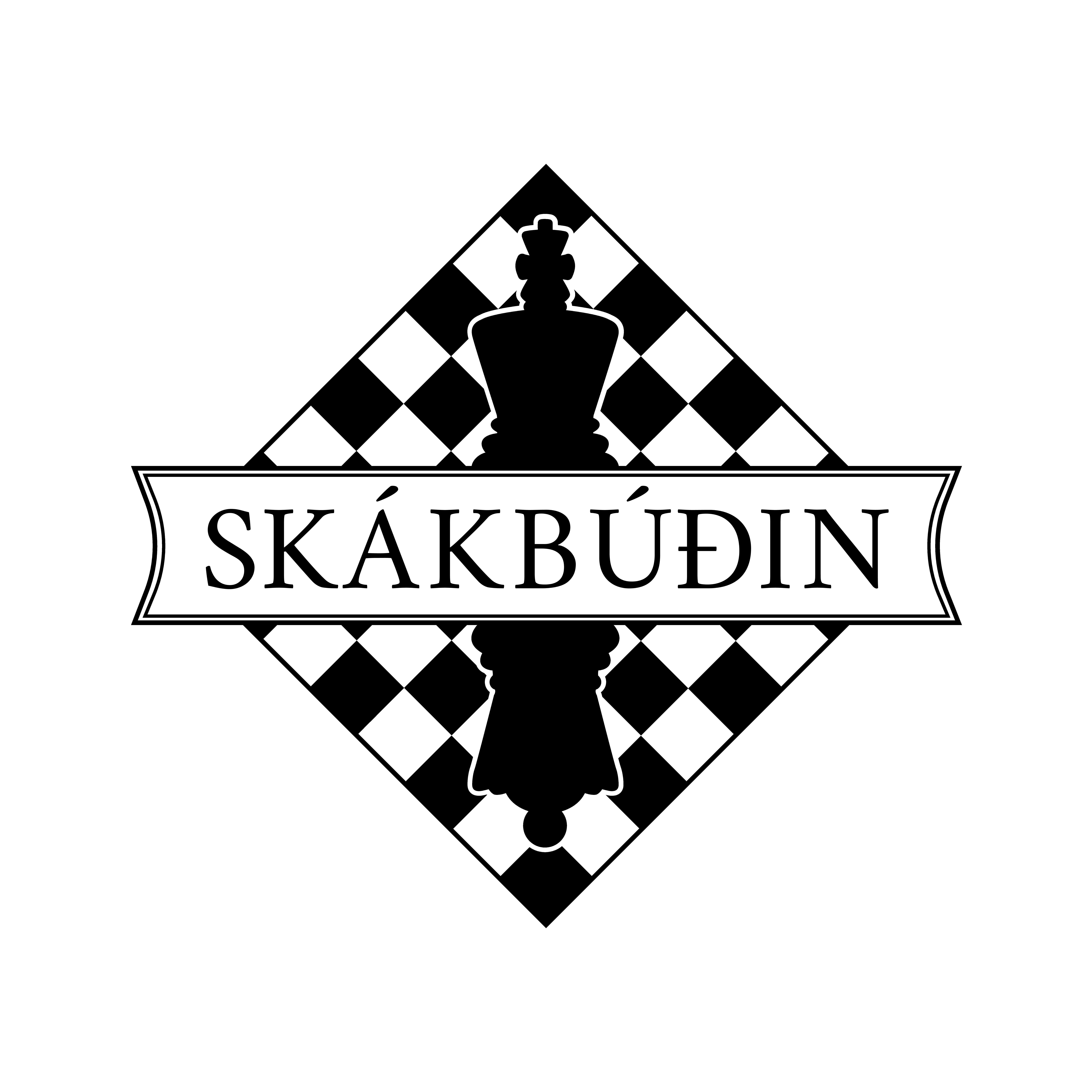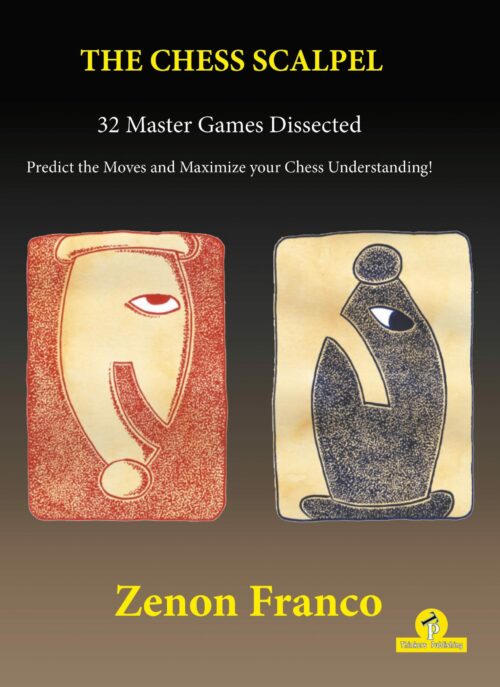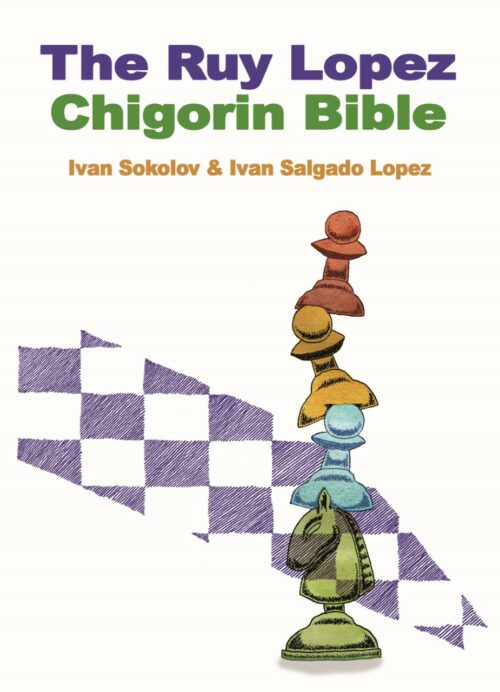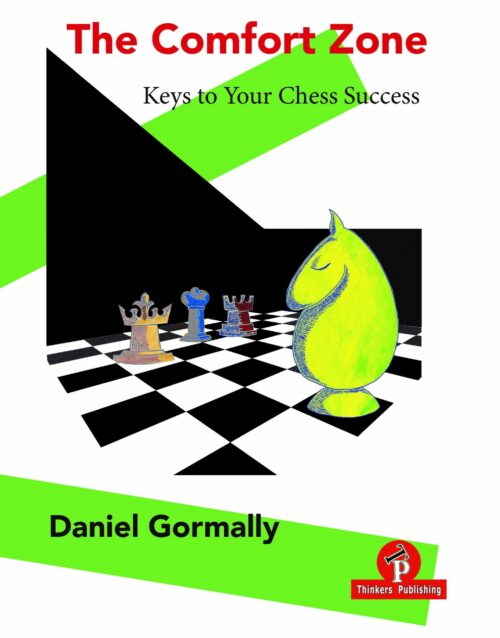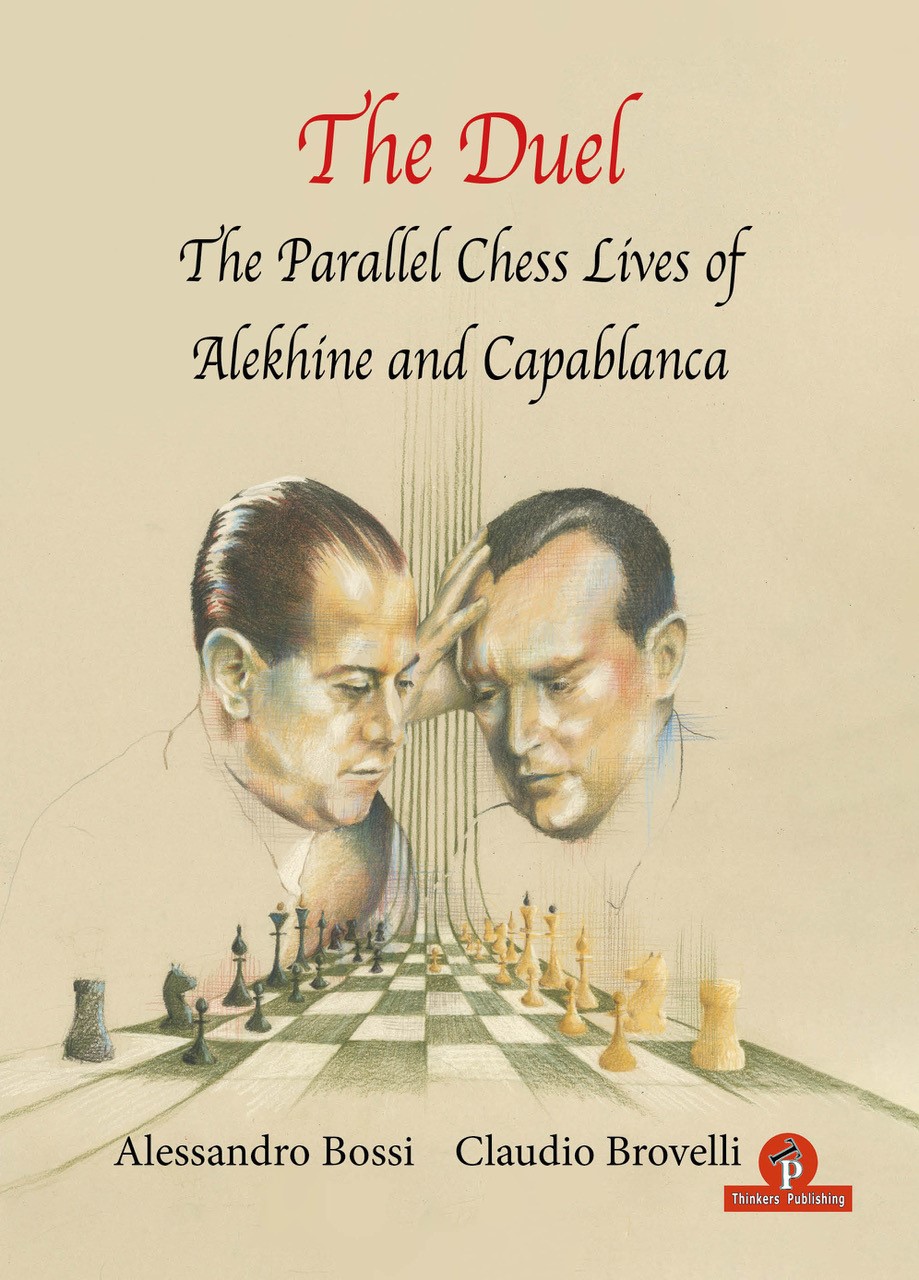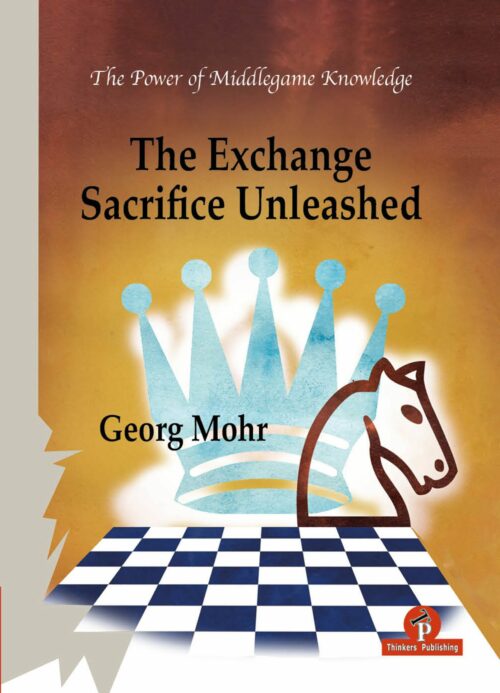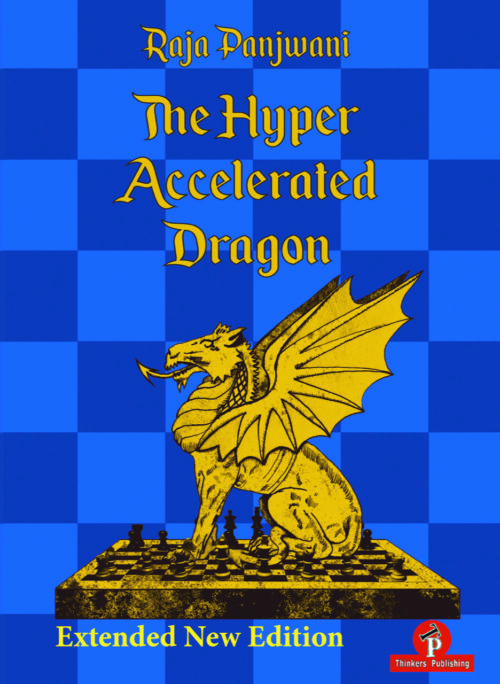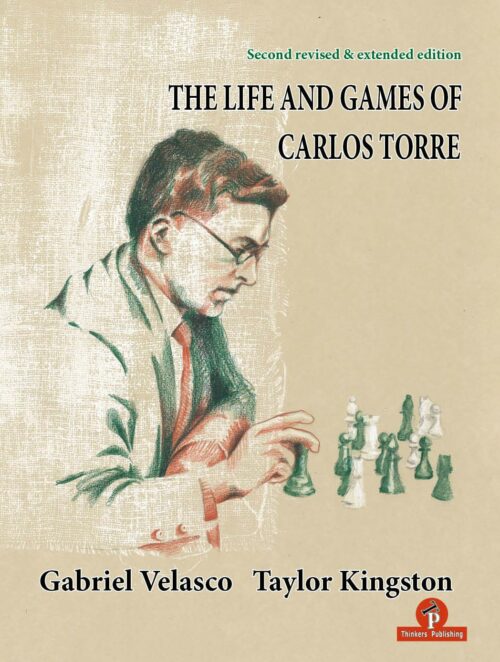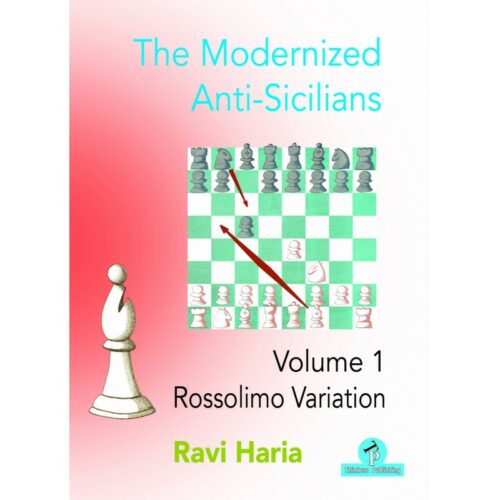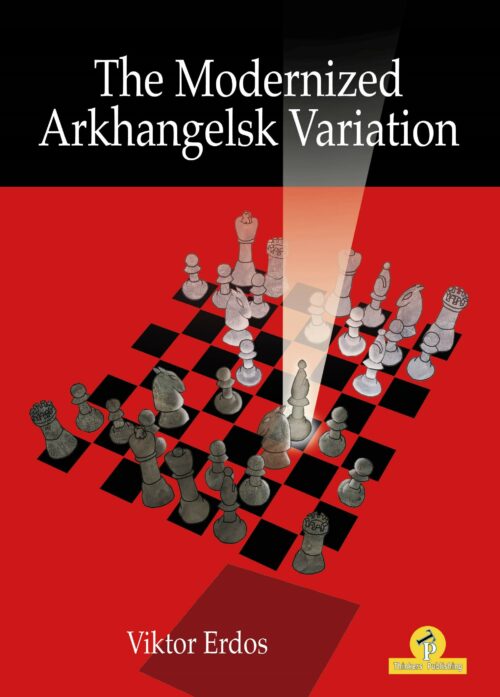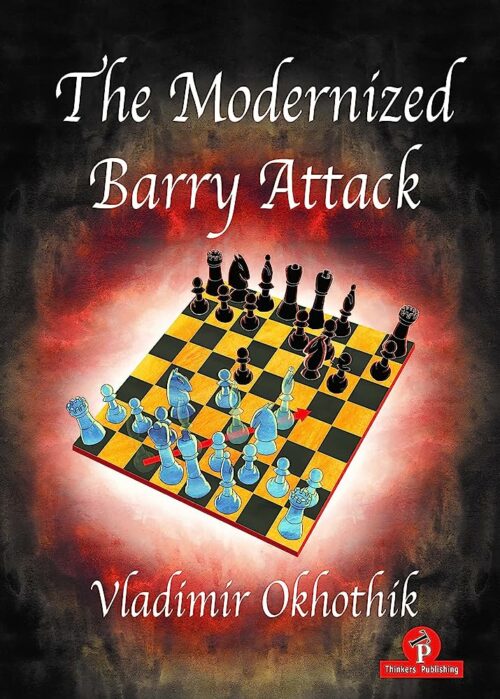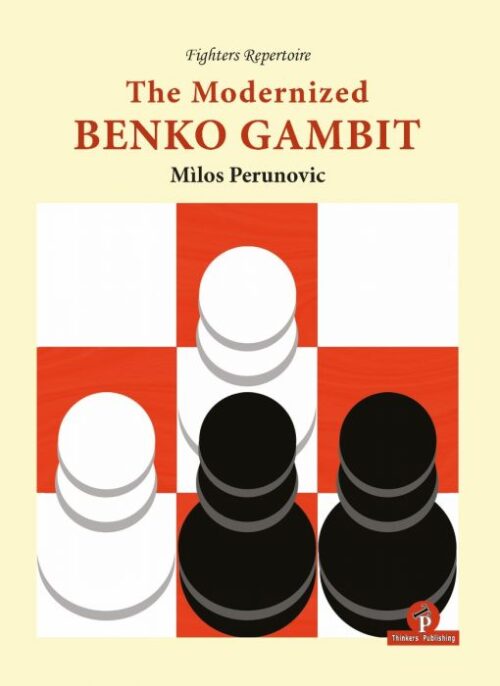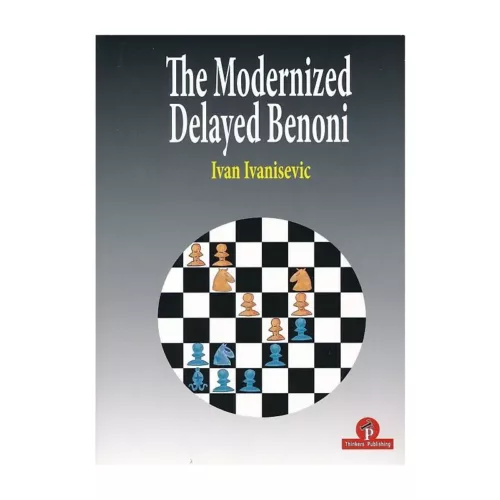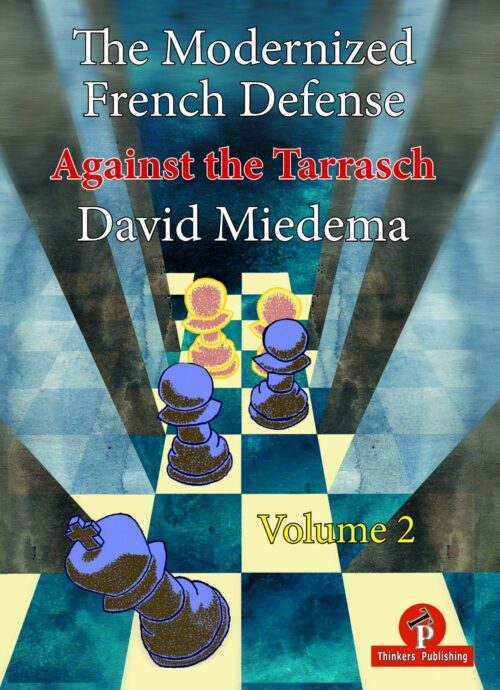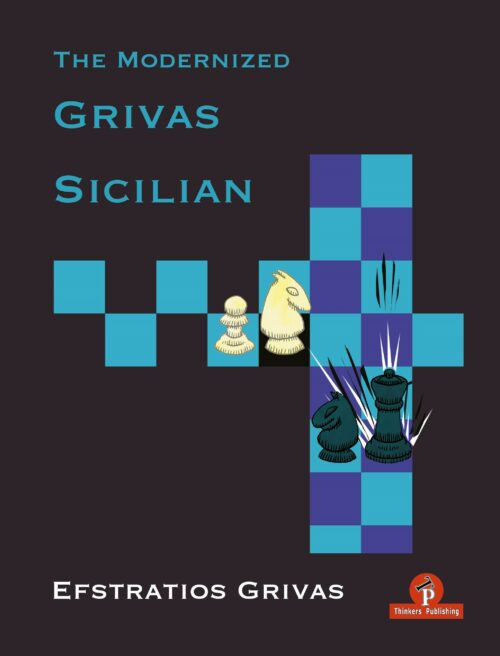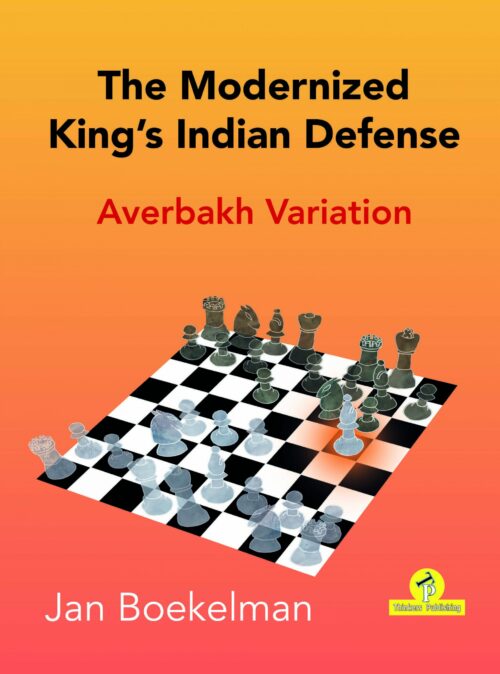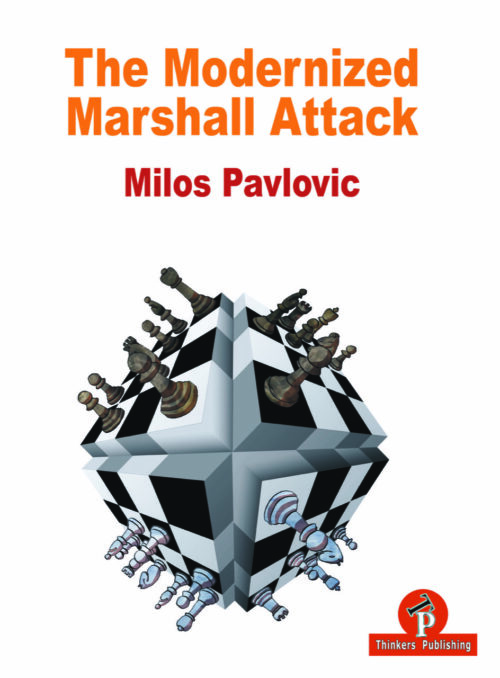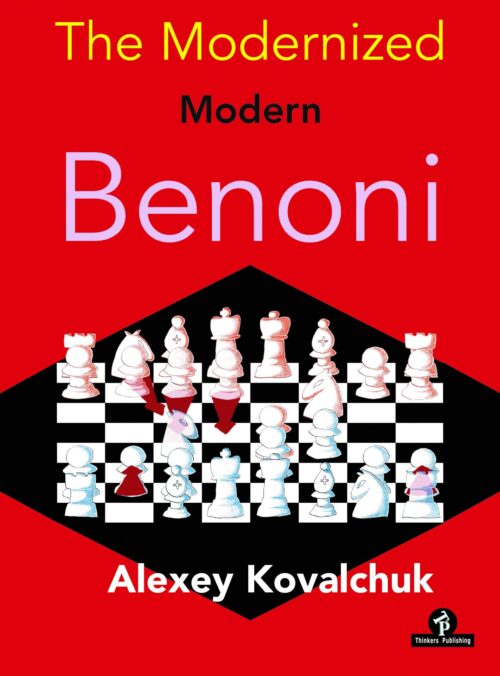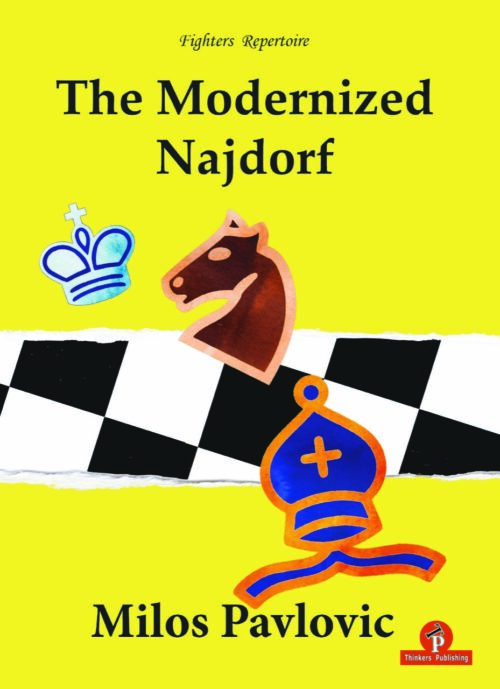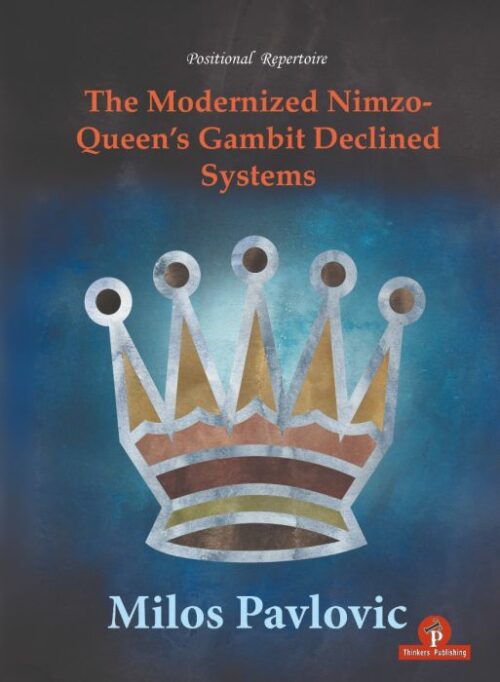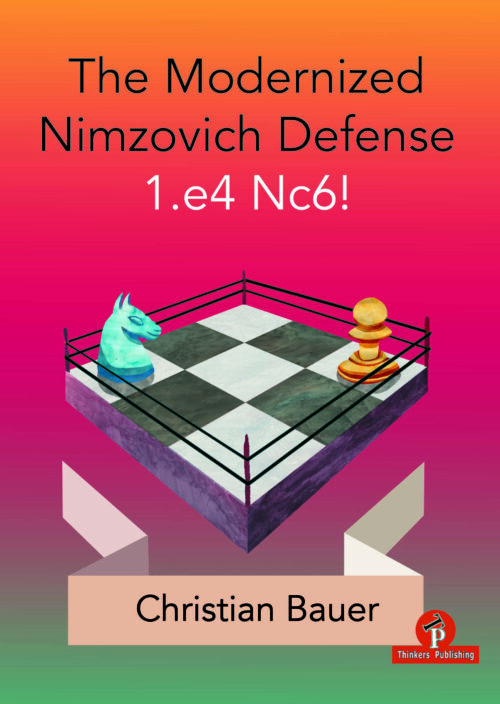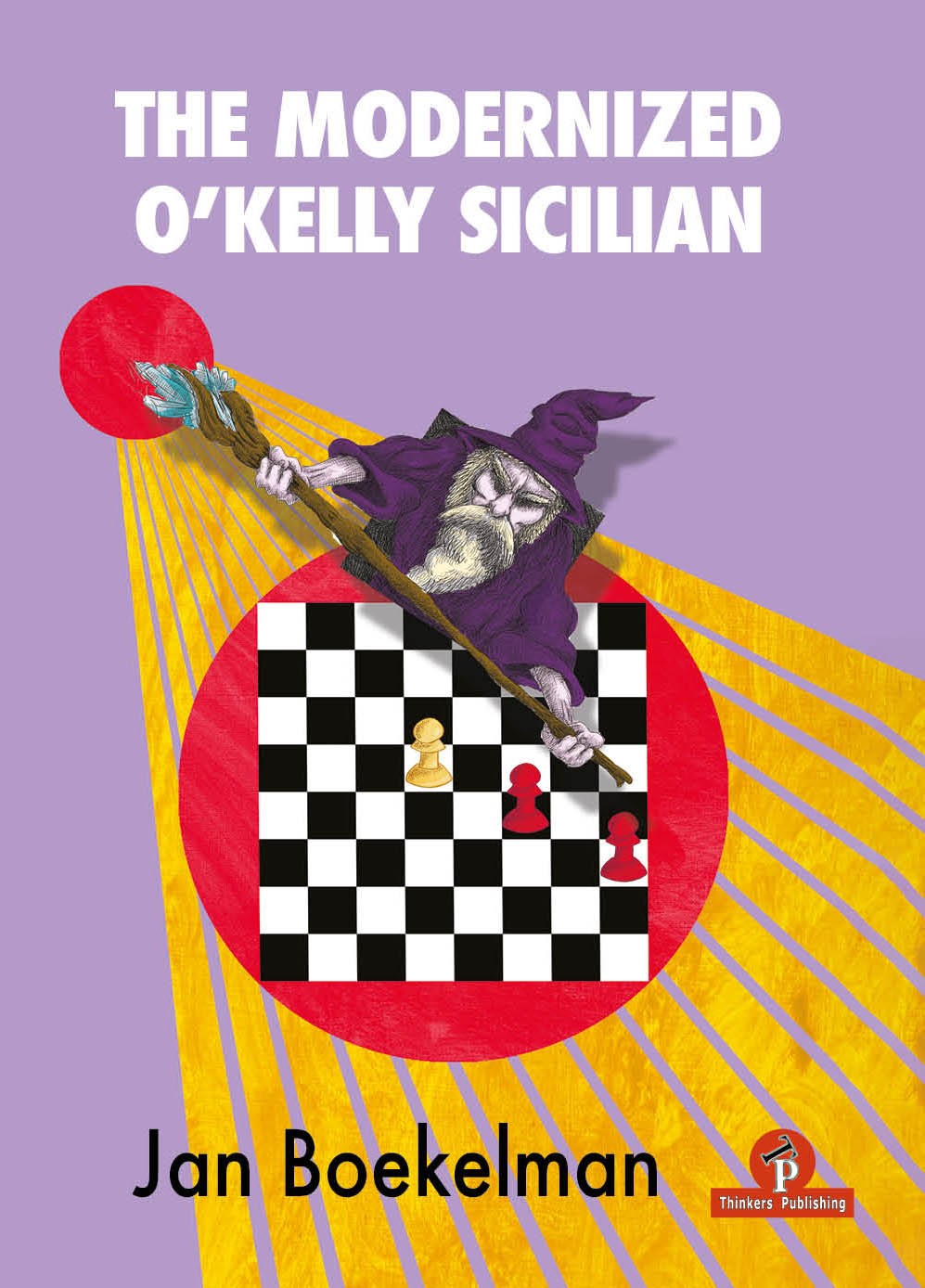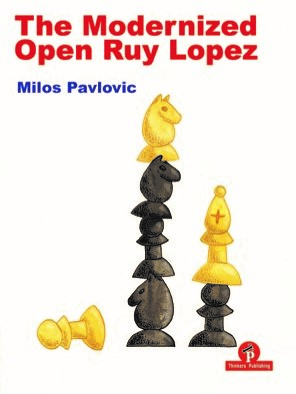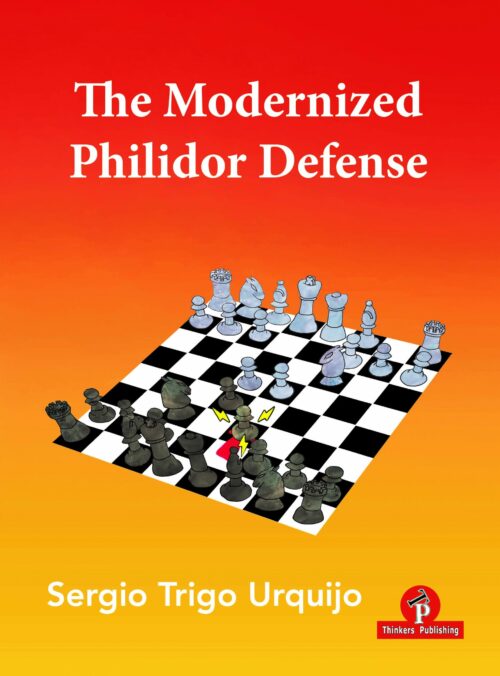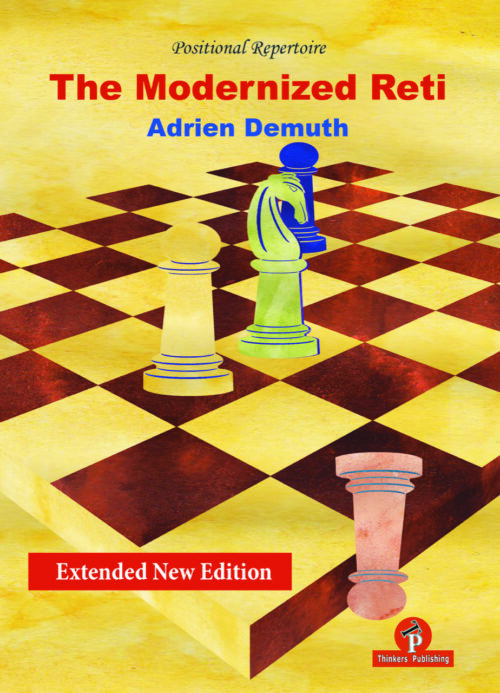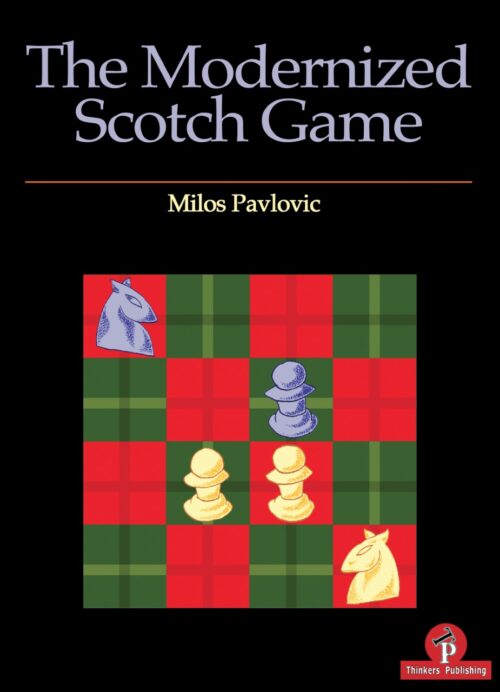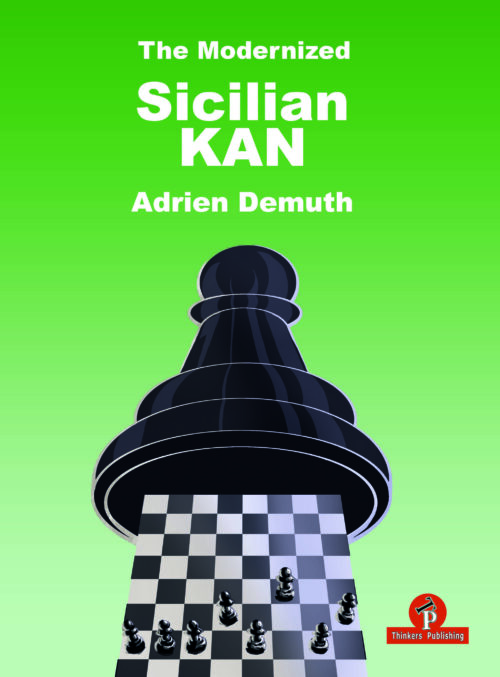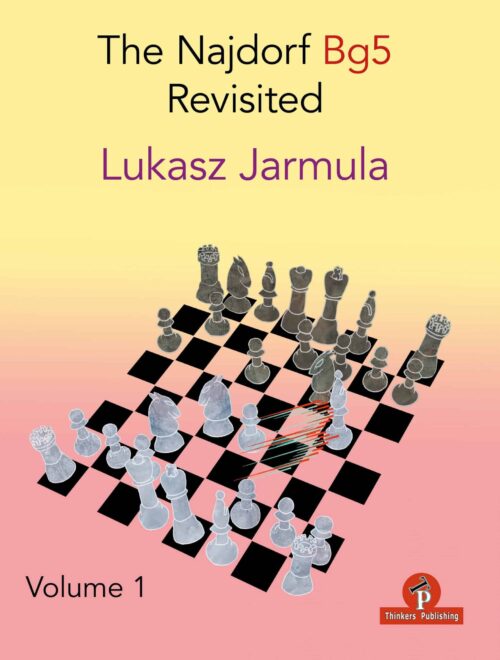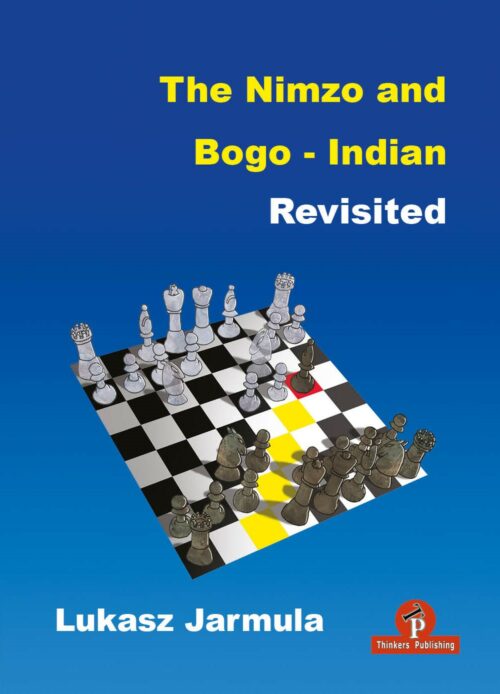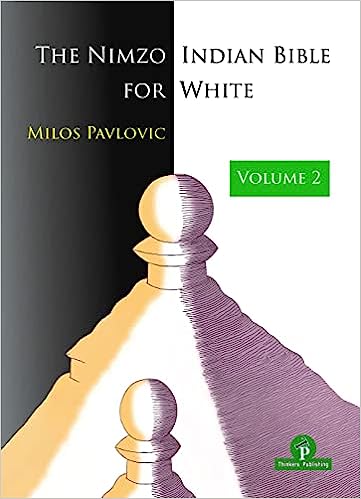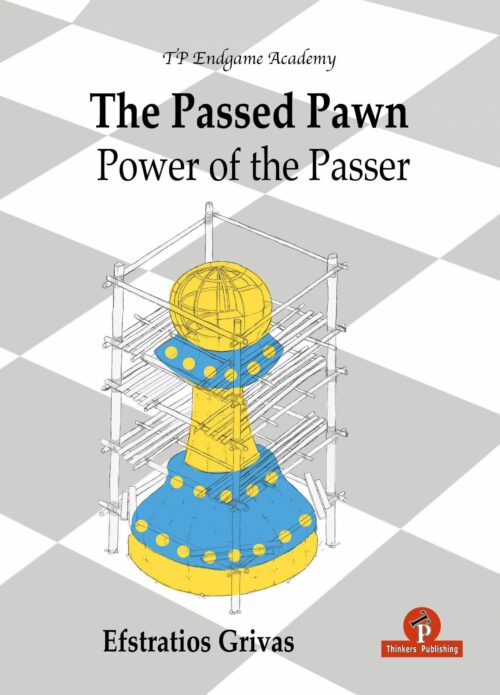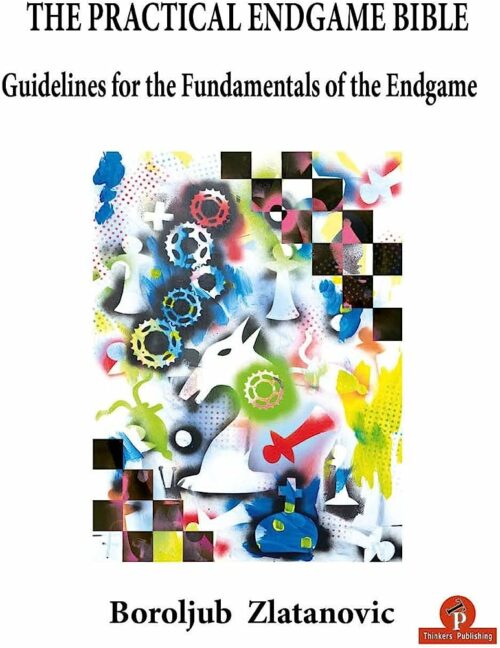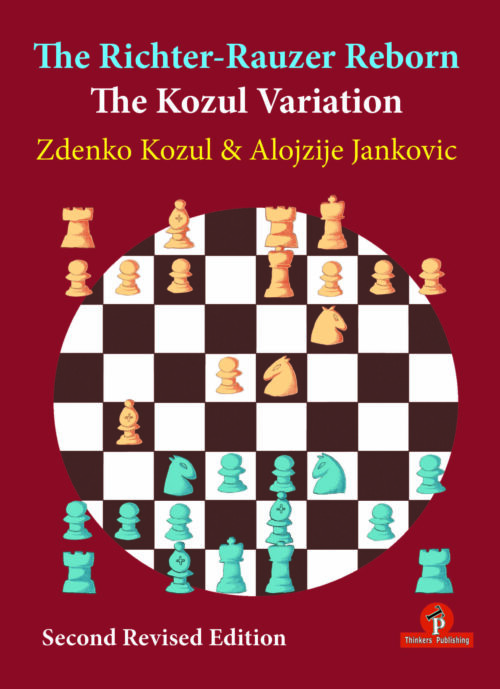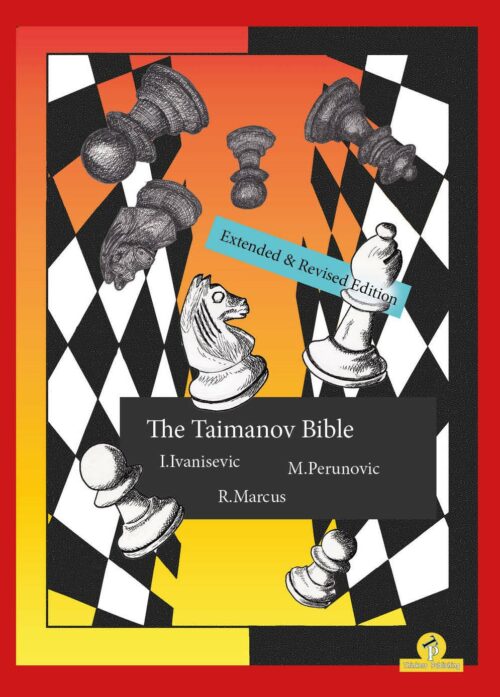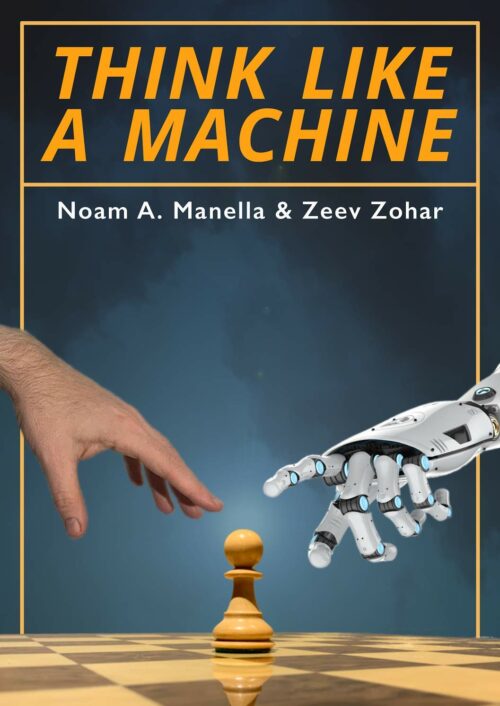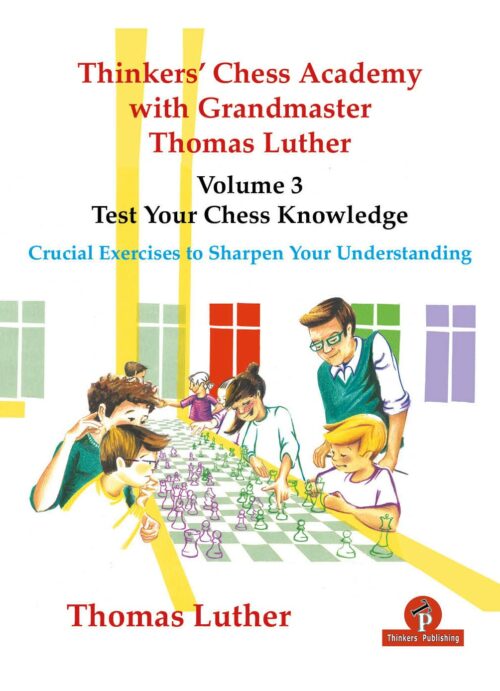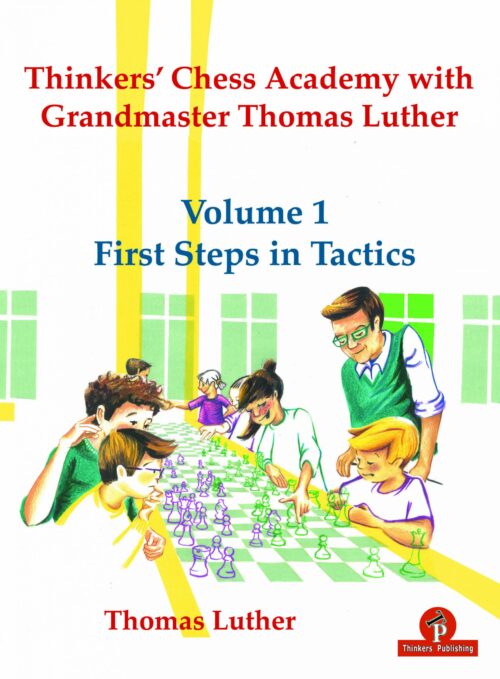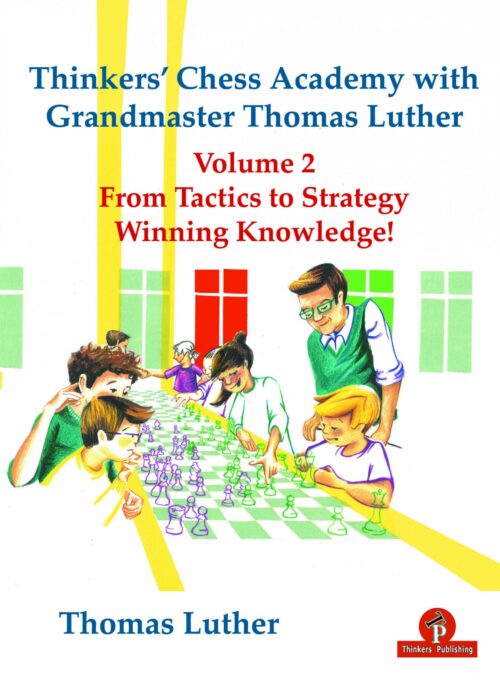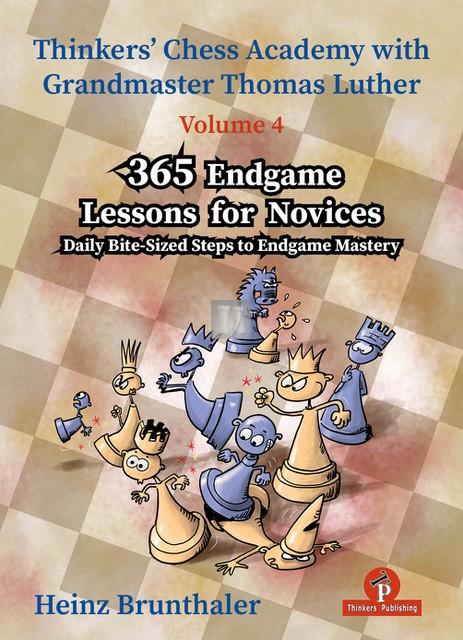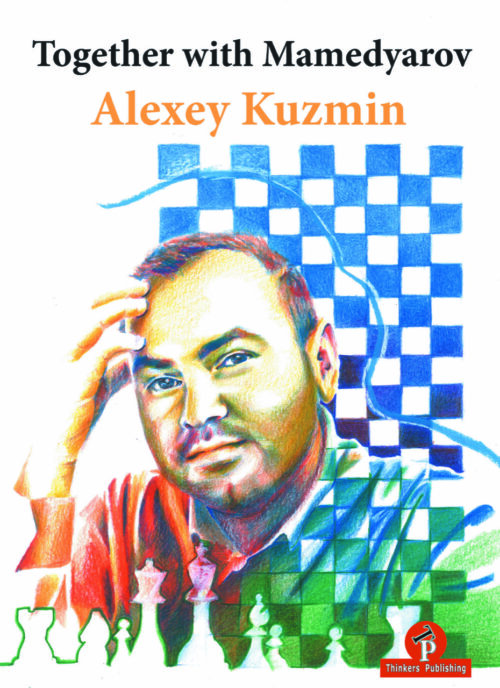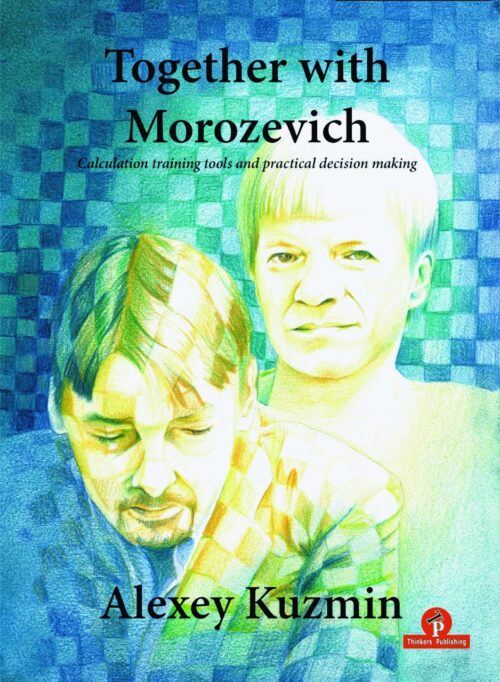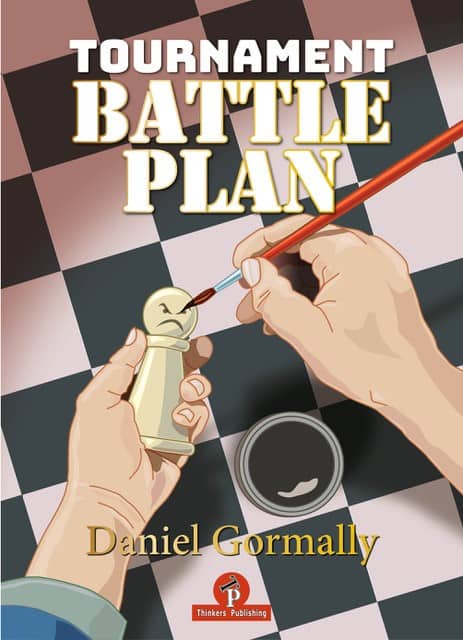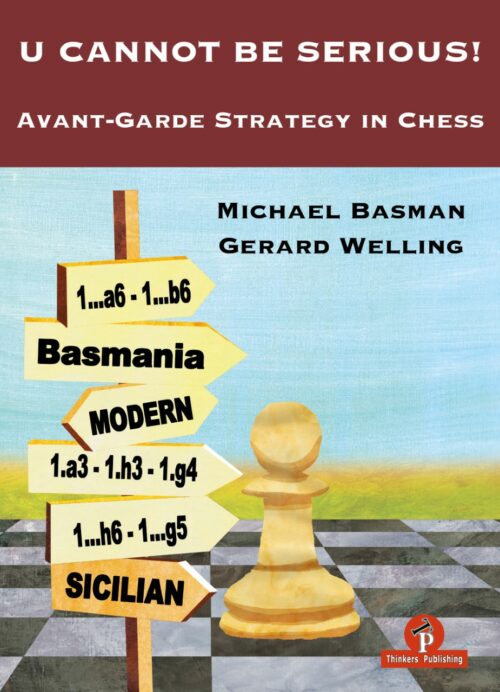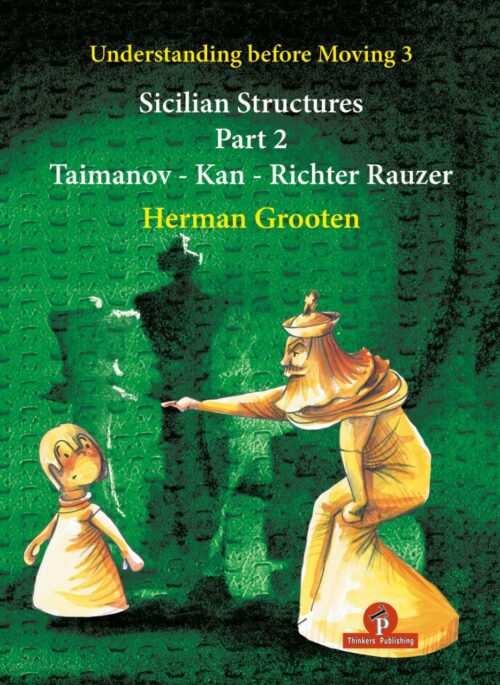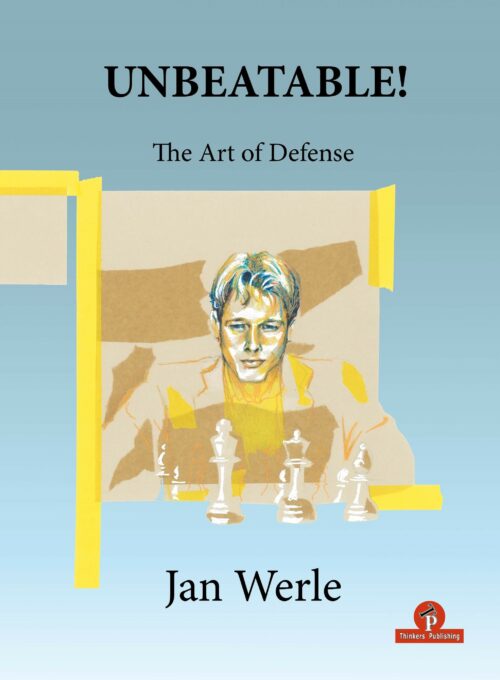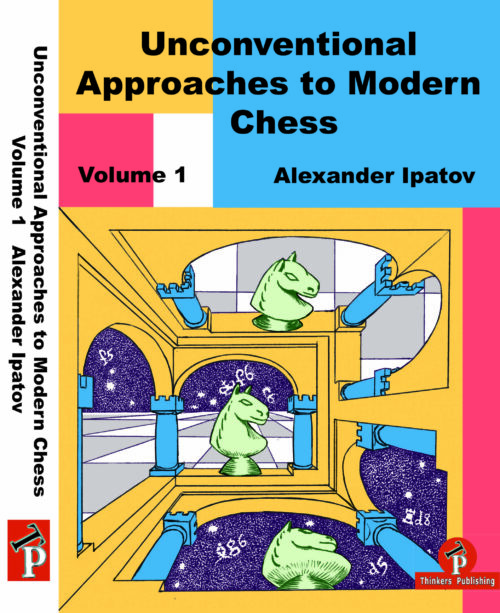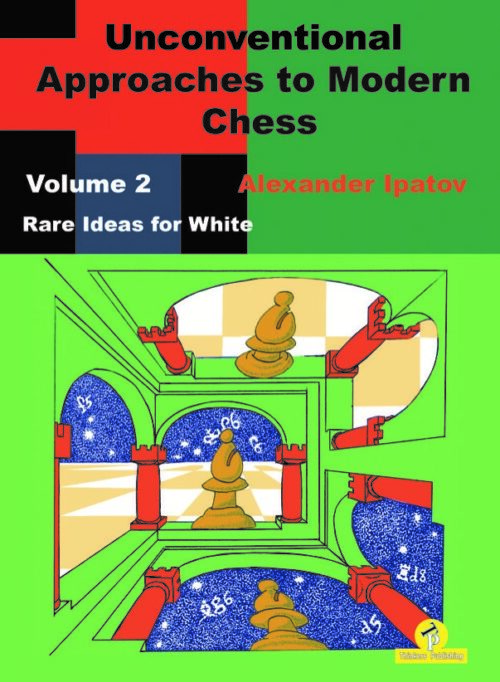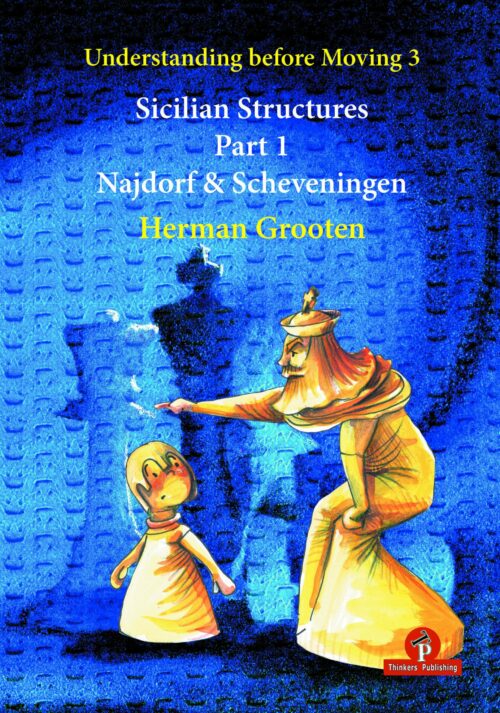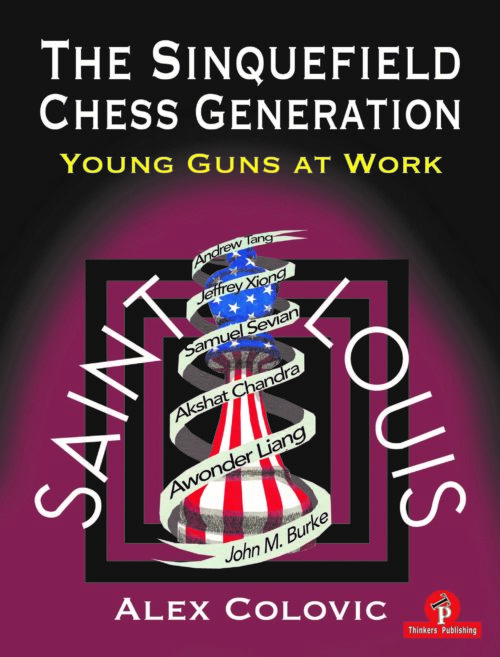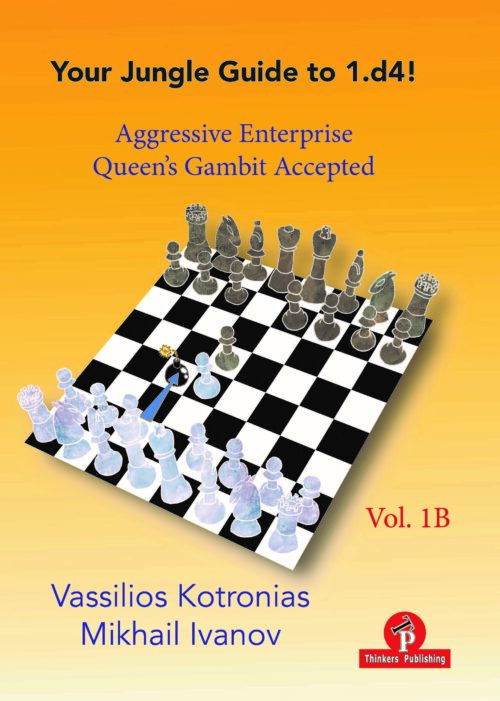-
Á útsölu!The idea behind this book is for you to ‘play’ as in a real game, and it is my job to ensure you have a pleasant time while training. I suggest you take at least an hour and a half for each game and as your coach I will indicate when to guess the moves. Sometimes there will be suggestions — including tricky ones — to measure your concentration level. The ideas behind the moves are always explained. The games have been chosen according to my personal liking and commentaries are based on those by the players themselves, which is a great help in understanding what indeed happened. In some games you will have to guess moves for the losing side too. Indeed, I expect that as you proceed you will become familiar with the question of Mark Dvoretsky: “What could my opponent play?”. Importance has also been given to the practical aspect, which doesn’t always coincide with the suggestions off ered by the engines as best. This is to make it more like ‘a real game’.
-
Á útsölu!“The current trend, developed in recent years, is for Black to capture on d4 with his e-pawn, aiming for Benoni-type pawn structure positions which lead to rather double-edged positions.” ~ Ivan Sokolov
-
Á útsölu!Nýtt inn! Frábær bók eftir GM Gormally hate introductions so I’ll keep this short. (A bit like the good moments in my chess career.) The inspiration for this book came from a golf tournament on the PGA tour I was watching recently. They’ll be plenty of golf and sportinganalogies in this book, so if these annoy you, then probably you should try another book. (Tough cookies if you’ve already bought.) Jason Kokrak won it, his first PGA tour event.
-
Á útsölu!I am convinced that to cultivate the memory of the past and to study the classics is always useful and worthwhile, not least because it enables us to understand and face with greater awareness the facts and the problems of the present time. Much has already been written about the giants who have preceded us, and in particular, the Cuban, José Raúl Capablanca, and the Russo-Frenchman, Alexander Alekhine, but a new approach can surely offer different and interesting perspectives. In The Duel, Alessandro Bossi and Claudio Brovelli go deep into the lives of these two legendary World Champions, who have left their mark in an unforgettable manner on their epoch (the first forty years of the 20th century) and who remain – in part, due to their very different personalities and relationship with the game – inimitable examples for all the chess-playing generations to come. The choice to present in parallel the two biographies (in my opinion quite rightly so), shows clearly and effectively similarities and differences, not only in the style of play, but also in the approaches to life of the two protagonists. With very precise historical descriptions and presenting the events in chronological order, the authors accompany us on a journey alongside the lives of these two legends of chess. In this fashion the personalities emerge, in many ways antithetical but equally fascinating: Capablanca, friendly and charming in society, precocious, genial and nearly invincible on the chessboard, and Alekhine, who combined a wonderful talent with a capacity for work, a competitive attitude and an energy which was truly enviable. Alekhine was rational and focused in pursuing his objective to supersede his rival. The Cuban champion represented for the younger Russian player a reference and a model – firstly, to be studied from a critical and highly penetrating perspective and then to be surpassed and beaten. The fact that, after wrestling the world title from him in the year 1927, Alekhine had always refused Capablanca . The Duel, the chance of revenge will always remain a cause of regret for chess fans, but it also demonstrates that the new World Champion was fully aware of having performed a feat that was perhaps not repeatable. The many masterpieces that both of them created on the chess board, which constitute for the public their most important legacy, enrich this volume and underline key moments of their respective careers. The games are analyzed well by the authors, who enlighten the reader as to how the diverse conceptualization and the different styles of the “duelists” (the more strategic and positional of Capablanca’s versus the more aggressive and combinative of Alekhine’s) are instructive and entertaining even nowadays, for all those who love chess and who wish to improve their understanding of it. The value of this volume lies also in the parts where Bossi and Brovelli, with painstaking accuracy, have quoted both direct impressions of the two protagonists (interviews, articles, letters and quotations from their works) and evaluations (in the comments and memories of their contemporaries). In such a way, a contest of wider significance is described, which helps in understanding the characters, the period and the specific contexts. Among the witnesses emerges, in particular, Esteban Canal, the great champion of Peruvian origin who spent much of his time in Italy. He had the privilege of fighting with both Capablanca and Alekhine and becoming acquainted, if not a friend, with them. One of the authors, Alessandro Bossi, was lucky enough to come to know Canal personally and to hear directly from him of the many episodes and anecdotes described in this book. Enjoy your reading! GM Michele Godena, March 2022
-
Á útsölu!• Compensation is a chess concept that we only fully understand when we enter the world of serious chess. • The relative value of pieces is perhaps the most difficult chess concept of all to explain. • It is one that every player must feel and believe in and can only be accepted with the help of our own practice, and when we feel it come together as though a part of us. • Why so much talk about such or similar sacrifices? Quite simply because we are afraid! We have been taught, and practice shows and proves the clear fact, that the closer we get to the last part of the game, the ending, the more pronounced a material advantage becomes. • If in the middlegame we can still hope for sudden turns, for the influence of other pieces, this is negligible in the endgame. • Maybe less so with tactical sacrifices, where we immediately see what the sacrificer gets in return. • How can we not accept the rook that the opponent offers us, when there is nothing concrete to see? One or two weaknesses perhaps, but they can be eliminated, and the material advantage and a secure victory in the endgame remains.
-
Á útsölu!The Hyper Accelerated Dragon is recommended for all players that are eager to enter critical lines in this exciting Sicilian Opening!
-
Á útsölu!Here is what has been added to this edition:
- More accurate and extensive annotations using ChessBase and Stockfish 14.
- Torre’s own annotations to several games have been unearthed and added.
- Added games to give a more rounded view of Torre. Also the six games between players other than Torre that he annotated for the Mexican Championship tournament book.
- Many more diagrams and photographs. Also more thumbnail bios of Torre’s opponents.
- More ancillary material about Torre’s life and career: newspaper articles, pictures, anecdotes, interesting facts, opinions, trivia etc.
- A 1927 interview with Torre, published in the Yucatán magazine Anahuac.
- Excerpts from 64 Variaciones Sobre un Tema de Torre by Germán de la Cruz.
- Columns and articles from newspapers in Torre’s home town of Mérida.
- “A Clash of Opposites,” comparing and contrasting Torre with the notorious Norman Tweed Whitaker.
- The full text of Torre’s 1926 booklet Development of Chess Ability.
- A review of Torre x Torre, a fascinating documentary film.
- A more extensive, more fully informed overall assessment of Torre as a player.
-
Á útsölu!My aim with the book was to provide you with a lot of insights into this remarkable variation, The Ark, and to entertain the reader with spectacular, resourceful lines to illustrate the ideas. Thus, I must stress that my book should also be interesting for those who just enjoy chess in general, not just for the fans of this line seeking new ideas! Of course, you don’t need to memorize everything to be able to play the variation successfully. Longer lines merely tend to be examples of how the game might develop, which help to enhance your understanding.
-
Á útsölu!• The Barry Attack is a little rebellious but most dynamic opening • It’s one of the fastest ways to outplay your opponent in the opening. • The ‘’super repertoire’’ that always keeps Black under pressure in all variations. • Any reasonable opening set-up can work wonders for White or Black if they know it well. • Anyone who takes the trouble to play through each model example, move by move, note by note, will be rewarded. • Your strategic play will deepen and your tactics will improve along with your assessment skills, and you’ll end up with a great repertoire!
-
Á útsölu!“With this book, I wanted to revitalise the Benko and show that, although the computer isn’t that happy with Black’s positions in certain lines, his resources are impressive, especially in ‘THE PRACTICAL GAME’, because White will face many difficulties and Black’s counter attacks, no matter how well-prepared he is. Our Beloved Benko is still very much ALIVE!:” ~ Milos Perunovic
-
Á útsölu!“In my opinion, the Delayed Benoni is a kind of mystery for White also, since it has not been covered deeply enough in chess publications. So I think that this work could be useful for White players, too.” ~ Ivan Ivanisevic
-
Á útsölu!“It just takes some time to become familiar with all the possibilities and ensuing middlegames. But once you finally master the isolated pawn structure, it will serve you well and equip you with a wide selection of tools with which you can outplay your opponent” ~ David Miedema
-
Á útsölu!“Usually in the Ruy Lopez Black is looking for long, slow games in solid, closed positions. The Marshall flips this on its head and Black tries to accelerate the play and radically change the character of the game at an early stage.” ~ Milos Pavlovic
-
Á útsölu!“Over time, my attention focused on the Modern Benoni. In this opening, the bishop on g7 is the same icon that is the basis of the King’s Indian, but here it can operate on the whole a1-h8 diagonal instead of being locked in by its own pawn on e5, as usually happens in the King’s Indian. Black’s plan is outrageously simple: with pawns on d6 and c5, and sometimes b4, he creates a breakwater that opens up space for his favorite on g7.” ~ Alexey Kovalchuk
-
Á útsölu!“Learning the Najdorf will help all players to understand Sicilians in a better way. Different aspects of chess such as defence, attack and sacrifice, positional themes and tactical storms, can be found in this book.” ~ Milos Pavlovic
-
Á útsölu!“A combination of the Queen’s Gambit Declined and Nimzo-Indian is considered one of best ways to play against 1.d4, 1.c4 or 1.Nf3.” ~ Milos Pavlovic
-
Á útsölu!
- Jan Boekelman has produced you with a playable repertoire out of a somewhat sideline Opening, which nobody dared to touch to make it into an entire repertoire.
- Try to expand your knowledge in the 3.c3 variation and go beyond the book’s content
- Deepen your knowledge in 3.c4 variation and do not play it before you know it well
- Finally, follow the very strong GM Vladislav Artemiev, who has had a relatively successful run with this opening in rapid online events.
-
Á útsölu!The positions arising from the Open Spanish contain ideas so different from the usual Ruy Lopez that I sometimes wonder whether it should really be considered part of it at all. It is an open game with unbalanced structures and sharp play but compared to the Sicilian, for instance, for which the previous description would also apply, there is an important difference; there is a certain degree of stability and solidity in the Open Spanish which distinguishes it from the sharper realms of the Sicilian and puts this line in its own unique category of opening ideas.
-
Á útsölu!Nýr titill! Biblía Philidor skákmannsins. Virkilega vel unnin bók sem hefur fengið mikið lof. Óhætt að mæla með þessari. “Pawns are the soul of chess.” We have all heard this phrase more than once in our chess life and we owe it to the great French player François-André Danican, so-called Philidor, considered one of the best chess players of the 18th century.
-
Á útsölu!“Contrary to what critical pessimists might say, the Reti opening is an ambitious weapon for White. By avoiding the main theoretical debates, White tries to reach an unbalanced position from an early stage of the game, with many different plans available.” ~ Adrien Demuth
-
Á útsölu!“Credit can mostly be given to Kasparov for reviving this old opening, but there are many others who have contributed to exploring new ideas and forging new paths. A lot of discoveries have been made by some young grandmasters who don’t shy away from analysing deep tactical solutions with the aid of the silicon beast.” ~ Milos Pavlovic
-
Á útsölu!
- The spirit of Indian Defenses is based on flexibility and harmony.
- Most of the lines are positional, not tactical in character.
- While playing Black, you have to accept that occasionally you will not equalize, or get surprised or out-prepared.
- Learning the material from this book should sharply limit the extent of such instances, thus improving your overall results.
- Finally, we have an important piece of advice: remember about color strategy!
- The Bogo-Indian is mainly based on dark-squared control, while the Nimzo-Indian does so on the light squares. In case you forget what to do, this may prove a very useful guideline when choosing a move.
-
Á útsölu!“A passed pawn must be blockaded, so as to have its power restrained as much as possible. The minor pieces (knight or bishop) are ideal for this purpose, as they can rarely be forced to retreat by enemy action. On the other hand, the major pieces (queen and rook) find it difficult to achieve a stable blockade as is easy to harass them, while one must also consider that, for such valuable pieces, dealing with a mere pawn cannot be an efficient form of employment. Taking the above into account, it becomes clear that the side with the passed pawn should seek to exchange minor pieces and retain the major ones; the opposite applies to the defending side.”
-
Á útsölu!n addition to the basic Taimanov ideas we had to keep, we followed – in an original manner – our two main concepts: ‘almost never play an early …d6’ (Scheveningen-style) and ‘push …h5 whenever you can’ (Paulsen-style). The latest fashion, which we have to mention, did not even exist when we started to write our book – the 7.Qf3 line. Readers will have the choice between the peaceful 7…Bd6, and 7…d6 where we head for a sharp Sicilian, true to its style. In the famous English attack with Be3 – Qd2 – 0-0-0, in addition to the well-known …Bb4 and …Ne5, our second proposal – of which we can safely state that we are most proud – is called the “Serbian variation” starting with …Bb4 and …0-0. About the specific move order in reaching our Paulsen-Taimanov variation, there are two possibilities. The first possibility is to start with 2… e6 and 4… Nc6, and the second one is revealed by 2…Nc6 with 4…Qc7. We decided on the move order 2…Nc6 and 4…Qc7 firstly because we all learned this way in the Paulsen-Taimanov variation, but also for practical reasons. Firstly, we avoid 5.Nb5, which results in typical Hedgehog set-ups, and these positions are not to everyone’s taste.
- Another reason is to keep in reserve the option of playing …e5 at once, or sometimes even …g6 without touching the e-pawn. This book is the result of twenty years of our work and playing the Taimanov combined. We have played over 500 games in this variation and we desired to show all the beauty and richness of “our” variation. We hope that our book will conjure all this and more, and will help our readers into the labyrinths of our Taimanov Bible.
-
Á útsölu!Not every reader is ambitious enough or has enough time to work very hard on his chess. That’s quite understandable and nothing to be ashamed of. You can enjoy chess very well without being a strong tournament player. You could just entertain yourself by playing through interesting combinations. In this case don’t try too hard to solve the Advanced Lessons or Master Class exercises. Have a look to make yourself familiar with the position, than look at the solution and enjoy the surprising combinations. You won’t learn as much as you would by racking your brain to crack the hard nuts. But some knowledge and experience will certainly rub off and increase your understanding of chess. I hope this book will help you to work towards your goals and let have you fun with chess, Thomas Luther, September 2022
-
Á útsölu!Crucial Exercises To Sharpen Your Understanding This is the third book of the Thinkers’ Chess Academy series. I thought long and hard about the best way to structure this Workbook. My idea was to make a book with additional exercises for readers of my earlier books Thinker’s Chess Academy Volumes 1 & 2 (TCA1 and TCA2 for short) while working with these books, plus material for really interested and ambitious readers to maintain and broaden the skills they have already learned.
-
Á útsölu!“Together With Mamedyarov” is not a collection of his selected games but it is primarily a study-book. It contains test positions taken from games of the famous Azeri grandmaster with detailed comments on the solutions to the tasks. In this book the solutions have been placed right after a diagram with a test except for the six positions given as a warm-up in the beginning of the chapter one. For those of you who work without the assistance of a coach would recommend that you cover the answer with a sheet of paper to avoid spoiling the benefit of solving the problem.
-
Á útsölu!This book invites the reader to enter the wonderful elite chess world with one of the most creative GM’s of all time, Alexander Morozevich. It tells about his approach to the core of fighting, about his strongest points but also about his weaknesses. It presents masterpieces and painful losses. However, the author not only shows a panorama of his creativity but also offers the reader to think over the problems together with ‘Moro’. You can simply take place in his seat, look through his eyes and finally play like Morozevich!
-
Á útsölu!Nýtt inn! Vertu öðruvísi og hugmyndaríkur við skákborðið. Komdu andstæðingum þínum á óvart. This book is written with the intention to introduce the reader to the creative chess ideas of Michael Basman. He gave up more intense regular tournament chess around the turn of the millennium, to concentrate his energy on the development of school chess. And that is what he is mainly known for in recent times, as the motor who made the UK Chess Challenge blossom. Nowadays the yearly nation-wide school competition still attracts around 40,000 children, and that is not even the record. […]
-
Á útsölu!What you are holding in your hands is the natural follow up of Volume 1 where some “lesser” openings aft er 1.d4 d5 2.c4 were examined, as well as a couple of less popular variations of the Queen’s Gambit Accepted. This second Volume comprises all of the established main lines of the QGA aft er our recommended 3.e4 with the intention of giving you a full picture of this topical opening while helping you build a repertoire based on aggressive ideas. Objectively speaking, it is very hard for White to find an advantage in the event of the absolute main lines 3…Nf6 and 3…e5, but we believe we have done our duty. We scrutinized multiple interesting variations with the help of engines while applying our human understanding to select those lines that would be the most unpleasant for Black. Additionally, we tried to provide you with as many alternatives as possible so as not to become “victims” of a narrow repertoire.
